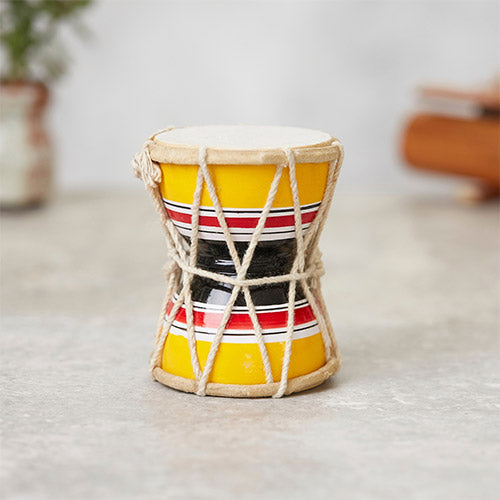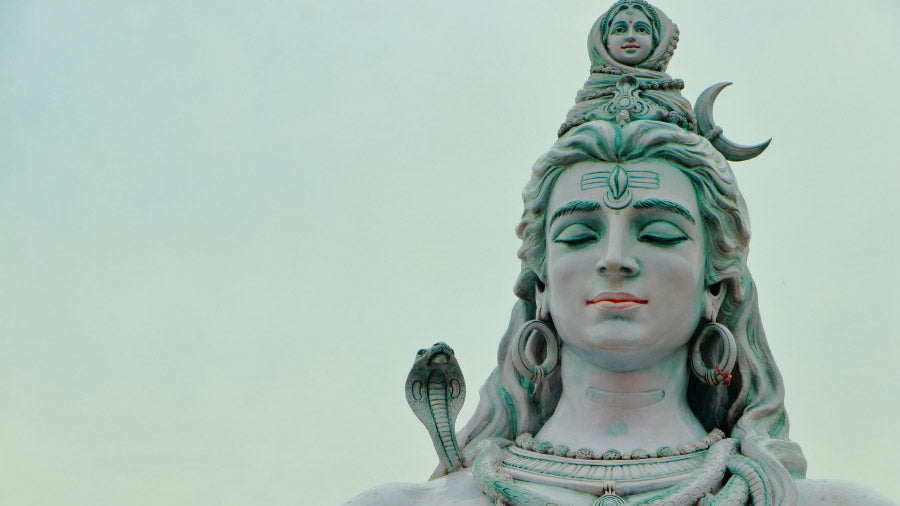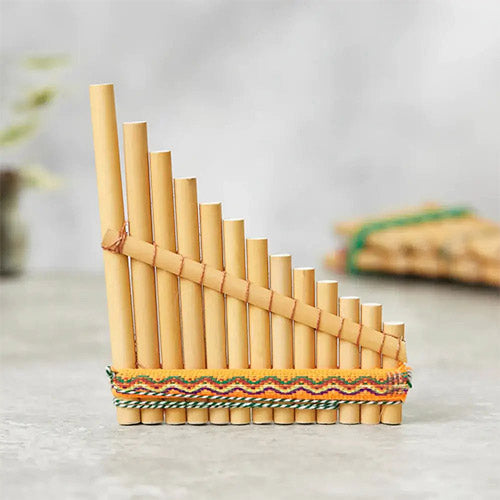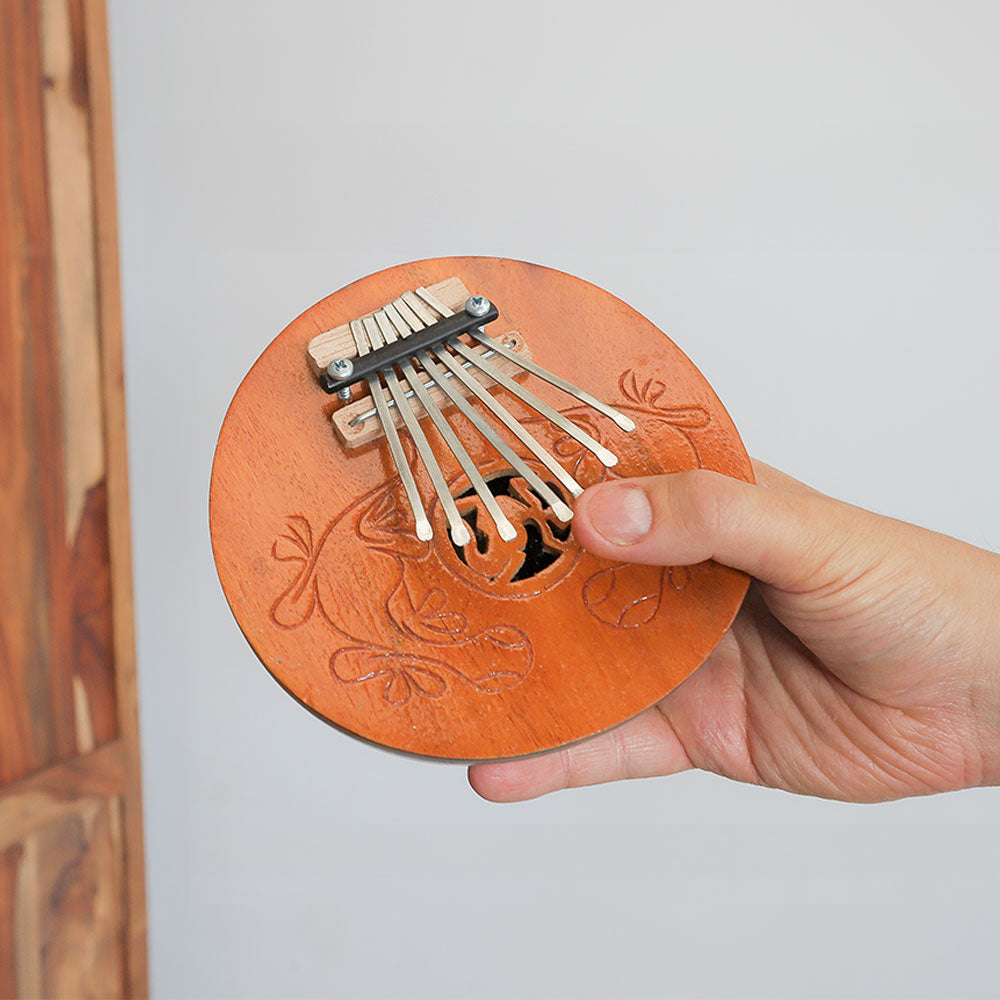Lord Shiva is a principal deity in Hinduism who is often known as the God of Destruction, embodying both paradoxical and transformative qualities. As part of the Trimurti, alongside Brahma and Vishnu, Shiva plays a vital role in the cosmic cycle, bringing about destruction that paves the way for renewal and creation. He is revered not only as a destroyer but also as a restorer, ascetic, and lover. Shiva's symbolism and the instruments associated with him, particularly the Damaru, reflect his multifaceted nature, making him a powerful figure in Hindu theology.
Lord Shivas various forms
Lord Shiva is depicted in various forms, each symbolizing different aspects of his divine attributes. One of the most powerful forms is that of Nataraja, the Lord of Dance, where he is shown in a cosmic dance that symbolizes the cycle of creation, preservation, and dissolution. Another is the form of Ardhanarishvara, which represents the synthesis of masculine and feminine energies, showcasing Shiva and his consort, Parvati, as one entity. Shiva is also worshipped as Lingam, an aniconic representation that signifies the formless aspect of the divine.
Each form of Shiva has its unique set of stories, meanings, and rituals associated with it. These forms are not just artistic expressions but are rich with philosophical and spiritual significance. They remind the devotees of the infinite nature of the divine and encourage them to seek beyond the physical realm.
The Symbolism of Shiva's Forms
The symbolism behind Lord Shiva's forms is as intricate as profound. Each form represents different aspects of the divine and conveys a deeper philosophical meaning. For instance, in his Nataraja form, the circle of fire surrounding him symbolizes the cosmos, and his dance represents the cycle of life, encompassing creation, preservation, and destruction. His right foot symbolizes liberation, and the dwarf beneath his left foot represents the ignorance that is overcome by knowledge.
In the form of Ardhanarishvara, the amalgamation of Shiva and Parvati signifies the ultimate unity of all dualities—male and female, spirit and matter, passive and active. This form is a powerful reminder of the oneness that pervades the universe, transcending all apparent dichotomies.
The Lingam form reflects Shiva's attribute of being formless and limitless. The Lingam is often found at the center of temples dedicated to Shiva and is revered with great devotion. It represents the beginningless and endless nature of the divine, an emblem of eternity and the infinite.
The Diversity of Shiva's Forms
Beyond the widely recognized forms, Shiva also takes on other avatars, each with its own story and significance. As Bhairava, he symbolizes the fierce aspect of the divine, a form he assumed to protect the universe from destructive forces. As Dakshinamurthy, Shiva embodies wisdom and is depicted as a silent teacher imparting knowledge through his meditative presence.
One can also witness Shiva's ascetic form, in which he is shown with matted hair, smeared with ashes, and seated on tiger skin in the Himalayas. This form emphasizes his role as a yogi, the ultimate master of self-control and meditation, detached from the material world.
The Worship of Shiva's Forms
The worship of Shiva's forms varies widely across different regions and communities. Each form is celebrated during specific festivals and rituals, such as Maha Shivaratri, a night dedicated to Shiva, where devotees fast, chant, and offer prayers to the Lingam. In Southern India, the dance of Nataraja is celebrated during the Natyanjali festival, where classical dancers offer their performance as worship.
In temples, worship of Shiva's forms involves rituals such as abhishekam (ritual bathing of the idol), offering of bael leaves, and recitation of the Shiva Purana, a sacred text that narrates Shiva's stories and teachings. Devotees seek blessings for their spiritual growth and liberation, as Shiva is regarded as the ultimate guru who guides the soul towards enlightenment.
The forms of Shiva are a gateway to understanding the multifaceted nature of the divine. They are not mere representations but are imbued with a spiritual essence that transcends the physical depictions. As I continue to explore the depths of Shiva's symbolism, I am reminded of the endless paths one can take to connect with the divine and the myriad ways the divine manifests to guide and inspire.
Symbols and their Meaning in the Worship of Lord Shiva
The Trident (Trishul)
One of the most recognizable symbols associated with Lord Shiva is the trident or Trishul. This three-pronged weapon symbolizes the three fundamental aspects of life: will, action, and wisdom. It also represents the three gunas (qualities) of nature—sattva (goodness), rajas (passion), and tamas (darkness)—which Shiva balances. The trident symbolizes Shiva's power to destroy evil and ignorance and pave the way for new creation.
The Crescent Moon
Adorning Shiva's forehead is a crescent moon, symbolizing the cyclical nature of time and the universe. It reminds us that life is a series of waxing and waning moments, of growth and dissolution. The moon also represents the mind, and its placement on Shiva's head signifies the control over the mind that is necessary for enlightenment. The crescent moon adds tranquility to Shiva's otherwise fierce and austere image.
The Third Eye
One of the most profound symbols is Shiva's third eye, located on his forehead between his physical eyes. The third eye symbolizes the eye of wisdom and insight. It is said that when Shiva opens his third eye, it can emit fire to destroy evil and ignorance. The third eye reminds devotees of the higher vision of spiritual knowledge and the importance of looking beyond the visible world to perceive the ultimate truth.
Lord Shiva and the Damaru musical instrument
The Damaru holds a special place in the lore of Lord Shiva. According to mythology, the sound of the Damaru was the seed from which the universe sprang into existence. It is said that the beats of the Damaru contain the fourteen basic sounds, or Maheshwara Sutras, which gave birth to the Sanskrit alphabet and, by extension, to all of creation.
The Damaru as a Symbol of Creation and Destruction
The Damaru symbolizes Shiva's rhythmic balance between creation and destruction. Its sound represents the universe's heartbeat, the pulse that animates life. In Shiva's hands, the Damaru becomes a divine instrument that orchestrates the flow of existence, ensuring that the cycles of time continue unabated.
The Spiritual Connection Through Sound and Rhythm
The connection between Shiva and the Damaru extends to spirituality, where sound and rhythm are seen as pathways to the divine. The sound of the Damaru is akin to the sacred syllable Om, which is considered the primordial sound of the universe. Through the rhythmic beat of the Damaru, devotees find a means to align their vibrations with the cosmic pulse, facilitating meditation and spiritual awakening.
The Damaru is not just a musical instrument; it is an emblem of the universe's rhythm, an echo of the eternal dance of creation and destruction.
Lord Shiva's connection to the Damaru musical instrument
The Damaru musical instrument is an ancient instrument with deep symbolic meaning in Hinduism, especially in connection with Lord Shiva. This small, two-headed drum is shaped like an hourglass and is said to be the instrument Shiva plays during his cosmic dance. The sound of the Damaru is believed to be the source of the Sanskrit language and all creation, as it represents the primordial sound from which the universe emerged.
Shiva's association with the Damaru underscores his connection to the rhythms of the cosmos and the sacred sound of Om. Through the beat of the Damaru, Shiva maintains the rhythm of the universe, balancing the forces of creation and destruction. This connection speaks volumes about Shiva's role as the lord of dance and sound and how these elements are interwoven into the fabric of existence.
The Damaru

The damaru, a small, double-headed drum with a distinctive hourglass shape, holds deep cultural and spiritual significance in Hinduism, Buddhism, and Tibetan Bon religion. Crafted from two hollow wooden shells or metal bowls connected by a string or leather strip, the damaru's drumheads, typically made of animal skin, produce rhythmic patterns when rotated rapidly. Symbolising the cosmic sound of creation, the damaru is closely associated with Lord Shiva in Hindu mythology.
Used by Hindu sadhus and Buddhist monks in devotional chanting, meditation, and ritual ceremonies, its rhythmic sound aids in concentration and spiritual awakening. While variations exist in size, materials, and decorative elements across different traditions, the damaru universally serves as both a musical instrument and a powerful symbol of spirituality and rhythm. You can check out our Damaru here.
Lord Shiva is not just a deity within the Hindu pantheon but a symbol of the universal principles of creation, preservation, and dissolution. His forms, symbols, and connection to the Damaru musical instrument are rich with meaning and offer a window into the profound depths of spirituality.
Lord Shiva (Frequently Asked Questions)
Who is Lord Shiva?
Lord Shiva is one of the principal deities in Hinduism, often referred to as the Supreme God or the Destroyer within the Trimurti, the cosmic trinity that includes Brahma the Creator and Vishnu the Preserver. He is revered as the embodiment of transcendence, meditation, and spiritual awakening.
What is Shiva the God of?
Shiva is the God of destruction, transformation, and regeneration in Hinduism. He is associated with cosmic forces that dissolve and regenerate the universe, symbolizing the cyclical nature of creation and destruction.
Why is Lord Shiva so powerful?
Lord Shiva is considered powerful due to his divine attributes and roles within Hindu mythology. He is often depicted as the Supreme Being beyond birth and death, a symbol of absolute power, knowledge, and liberation. His powers include the ability to destroy ignorance, purify the soul, and bestow blessings upon devotees.
What is Lord Shiva supposed to do?
Lord Shiva is believed to have various roles and responsibilities in Hindu mythology. He is the destroyer of evil and ignorance, the protector of devotees, and the guardian of cosmic balance. He is also associated with asceticism, meditation, and the path to spiritual enlightenment.
What is Lord Shiva's real name?
Lord Shiva has many names and epithets in Hindu tradition, reflecting different aspects of his divine nature and attributes. Some of his common names include Mahadeva (the Great God), Rudra (the Roaring One), Shankara (the Auspicious One), and Nataraja (the Lord of Dance). However, his true essence transcends names and forms, representing the ultimate reality beyond human comprehension.







